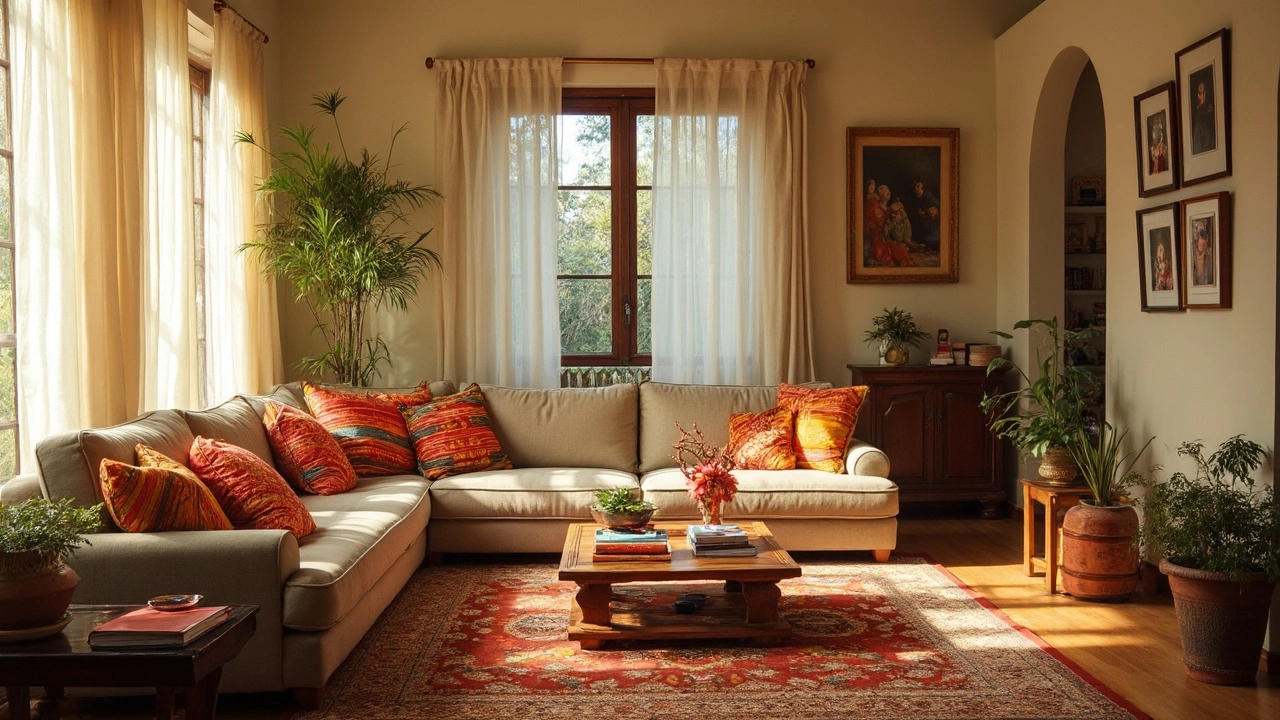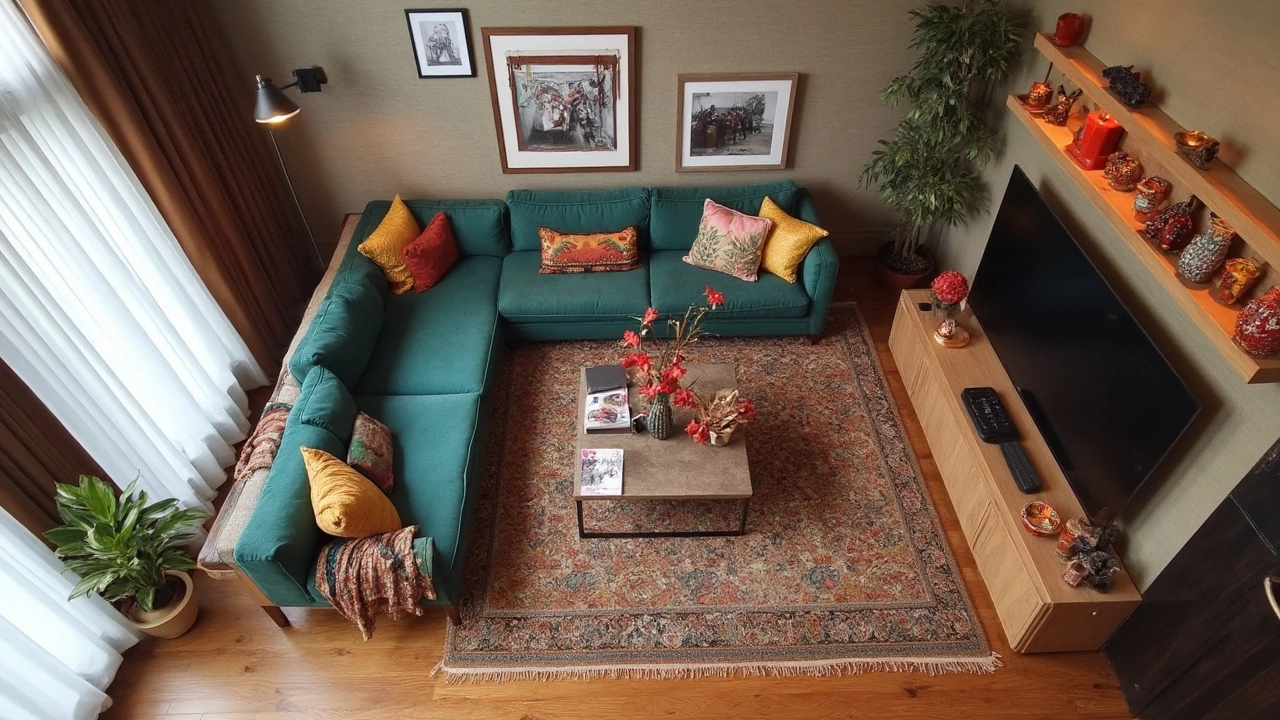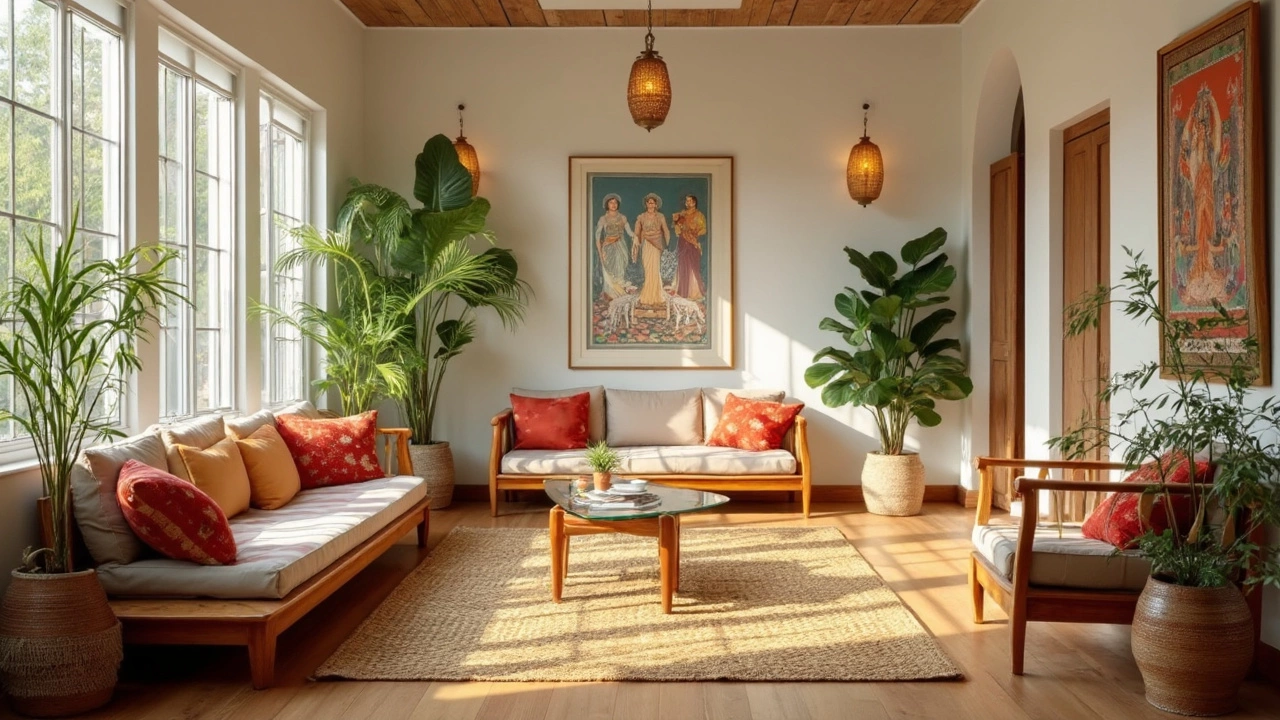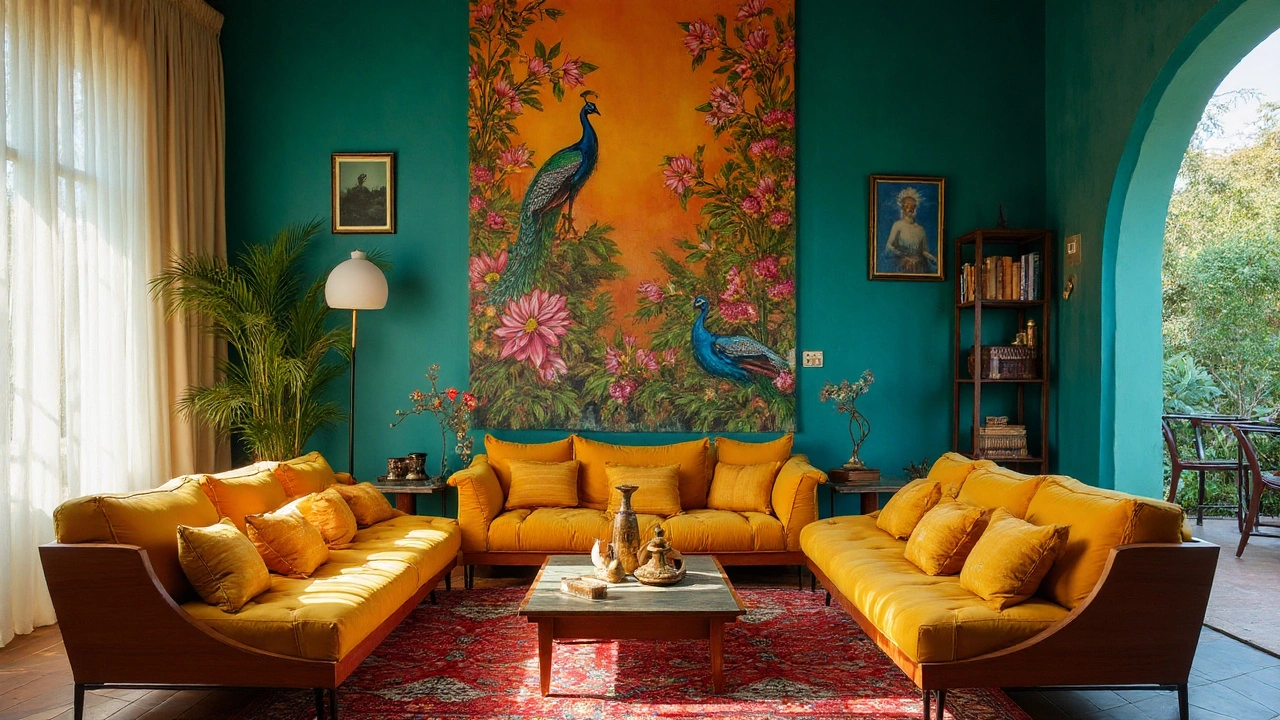How to Set Up the Perfect Living Room: Real Tips for Real Spaces

There’s nothing like that first flop onto your couch after a long day, so let’s talk about how to get every part of your living room just right. First things first: think about what you actually do in the space. Is it Netflix marathons, late-night chats with friends, family game nights, or maybe all of the above? Your answer should guide every choice you make, from how you set up your seating to the kind of lighting you pick.
One common mistake? People shove everything up against the walls, thinking it’ll make the room look bigger. In reality, pulling your sofa and chairs in—even just a few inches—can make things feel way cozier and more inviting. Designers love using area rugs to quickly define conversation areas, making even small rooms look pulled together. Just make sure the front legs of your sofa and chairs all sit on the rug so it doesn’t look like they’re floating in space.
- Nailing the Layout
- Choosing the Right Furniture
- Mastering Lighting Tricks
- Picking Paints and Textiles
- Adding Personality and Finishing Touches
Nailing the Layout
Your living room setup totally sets the vibe for your space, so let’s make sure it feels right. Start by figuring out your main focal point. For a lot of people, that’s the TV; for others, it’s a fireplace or a killer window view. Once you know what you want to draw attention to, arrange your sofa and main chairs so they easily face or circle around it. No one likes craning their neck to watch a movie or chat with friends.
Thinking about walkways saves you from stubbed toes and awkward furniture hopping. Try to keep at least two and a half feet (about 76 cm) between pieces you walk around often. This makes everything feel open, even if your space is tight. If you have a small living room, skipping bulky coffee tables for a couple of smaller side tables can open it up more.
Here’s a layout trick designers swear by: group your furniture in a way that makes conversation super easy, even if there’s a TV involved. A U-shaped or L-shaped arrangement with chairs angled in creates that hangout-zone feel. If your room is long and narrow, splitting it into two mini-zones—like a TV area and a reading nook—makes it feel less like a bowling alley.
- Keep seating within about eight feet (2.4 meters) of each other so conversations aren’t a shout-fest.
- Position your furniture layout so the room’s main traffic route doesn’t cut straight through the middle.
- Use area rugs to anchor zones, and make sure they’re big enough—ideally, all front legs of major furniture pieces should touch the rug.
| Room Size | Recommended Rug Size |
|---|---|
| Small (10x12 ft) | 5x8 ft |
| Medium (12x16 ft) | 8x10 ft |
| Large (15x20+ ft) | 9x12 ft or larger |
Remember, it’s better to have fewer, well-placed pieces than cramming every corner. Your home design is all about how it feels and works for you day-to-day. Keep it flexible and don’t be afraid to move stuff until it just feels right.
Choosing the Right Furniture
Getting the living room setup right means picking pieces that fit your space, your needs, and your style. Forget furniture showrooms where everything looks perfect but nothing feels like home. Start with your main items: the sofa and chairs. Here’s a solid tip—measure your space before you even think about buying anything. Multiple home design surveys found that over half of buyers regret at least one piece they picked, usually because it was too big or too small for their actual room.
If your space is tight, look for sofas with slim arms and raised legs. Bulky furniture swallows up a room fast. Got a bigger room? Sectional sofas can fill out the space and create a cozy vibe. Some people swear by modular pieces, so you can move them around when life changes.
"The right furniture supports your lifestyle, not the other way around. If you’re always hosting, look for more seats. If it’s just you and your dog, invest in the comfiest single couch you can find."
– Nate Berkus, designer and author
Coffee tables can do more than hold your remote. Storage ottomans, for example, keep things tidy. When choosing a table, make sure it’s about the same height as your sofa seat (usually 16-18 inches). Here’s a little table to help you size things up:
| Furniture | Good Standard Height | Spacing Tip |
|---|---|---|
| Sofa | 30-36 inches high | Leave at least 18 inches in front |
| Coffee Table | 16-18 inches | Keep 14-18 inches from the sofa |
| Side Chairs | 30-34 inches | Don’t block walkways |
Mix up materials and shapes for a laid-back look. If your sofa is fabric, try a metal side table. Got a heavy square couch? A round coffee table keeps things chill. And if you’ve ever wondered why your room feels crowded, check your furniture legs—showing a little leg actually makes the whole space feel airier.
Finally, don’t buy everything at once. People think matching sets look polished, but honestly, they can make your room feel dead. Take your time, and pick each piece for a reason. That’s what gives you a cozy living room that feels lived in, not like a page from some catalog.

Mastering Lighting Tricks
If you really want your living room decor to pop, don’t settle for just one light source overhead. Layering your lighting makes a huge difference—think of it as setting the mood for basically anything, from movie night to hosting friends. The magic combo? Overhead, task, and accent lighting.
Start with your base: a ceiling fixture or even recessed lights. The goal here is filling the room with even, general light for those times you just need things bright. But don’t stop there. Add a few floor or table lamps wherever you’ll be reading, working on a laptop, or just need a bit of extra light. Lamps with dimmers let you set the vibe in seconds, and smart bulbs are super handy if you’re always misplacing the remote (or frankly just want to mess with color for fun).
Accent lighting gives your living room setup some personality. LED strip lights behind your TV, a couple of wall sconces near art, or even a neon sign tucked away in a corner can make the space feel less cookie-cutter and more you. Real fact: according to a 2023 survey by the American Lighting Association, 89% of rooms that used at least three layers of lighting were rated as “more comfortable” and “welcoming” by their owners.
Here’s an easy way to check your setup:
- Check if your room has one main light, at least one lamp, and an accent (like a spotlight or strip light).
- If there’s glare on your TV, move lights or swap bulbs for softer, warm ones (look for 2700K-3000K on the box).
- Pick bulbs marked “high CRI” if you care about colors looking right—especially if you’ve gone bold with paints or art.
- Use plug-in dimmers or smart switches for total control, even if you rent.
If you’re on a budget, thrift lamps and use those stick-on, battery-powered spotlights or LED tape—they’re cheap but super useful. With smart lighting and layering, even small changes can make your cozy living room set up look next-level.
Picking Paints and Textiles
The colors you splash on your walls and the fabrics you bring in really set the whole vibe in your living room decor game. If your room doesn’t get a ton of natural light, lighter paint colors—think soft whites, beiges, or even a cool light gray—can open it up and stop it from feeling like a cave. If you’re all about cozy nights in, deeper tones like navy or forest green can actually make your space feel snug and stylish.
Want a hack? Grab some testers and paint big patches on your walls before you commit to a color. Daylight changes things, and what looks buttery yellow at noon could turn mustardy at night. According to a 2023 Sherwin-Williams survey, over 65% of homeowners said they regretted their first paint color pick, mostly because it looked different at home than in the store.
Next up: textiles. This is where you can let your personality show, even if you like to keep your walls simple. Go for sofa cushions and throws in bold colors or patterns, or layer in soft neutrals if you want things chill. Don’t be afraid to mix it up—if everything matches, your living room ends up looking like a waiting room. Pro tip: stick to one ‘big’ pattern (like for curtains or a rug), and keep the rest smaller scale so things don’t get too busy.
- Look for washable fabrics for throws and pillows if you’ve got kids or pets—life happens.
- Mix textures—like a chunky knit blanket and a smooth leather pouf—to make your living room look less flat.
- Rugs can tie everything together; make sure it’s big enough that at least the front legs of all your main furniture land on it.
What about curtains? Go floor-to-ceiling instead of just skimming the window top. It makes your ceilings look higher. And don’t forget: adding layers—like sheers under heavier curtains—lets you control light and privacy without losing style points.

Adding Personality and Finishing Touches
If you want a living room setup that feels like home, skip the cookie-cutter look and show off a bit of your own story. Family photos, vacation souvenirs, or even your favorite vinyl records can turn a blah room into something that’s all you. Don’t be afraid to mix old and new—maybe a thrift-store coffee table with a modern lamp. It’s those random combos that make a space interesting.
Wall art isn’t just for fancy houses. You can print out cool black-and-white photos or frame your favorite concert poster. A big piece hung at eye level instantly gives a room a focal point, and a gallery wall (a bunch of artwork grouped together) can make even the dullest wall pop. If you’re hanging shelves, space them about 12 inches apart so your stuff doesn’t feel crammed.
Pillows, throws, and rugs can change the vibe without needing to swap out your whole setup. Experts say swapping just your cushions and a throw blanket with the seasons keeps your living room decor feeling fresh, without costing much. Pick at least two colors that pop against your sofa to get that lived-in but polished look.
Plants are a game-changer. According to NASA’s Clean Air Study, some indoor plants—like snake plants and pothos—actually help remove toxins from the air. And fake ones are totally fine if you can’t keep anything alive. Plop a leafy plant in a boring corner or on your TV console to break up the blank spaces.
- Layer different textures: Mix leather, cotton, and soft knits instead of sticking with all the same type.
- Use baskets for blankets or loose stuff—looks neat, keeps clutter off the floor.
- Change out lamp shades or drawer knobs for an instant, cheap refresh.
If your room is small, use mirrors to bounce light around and make it feel bigger. A trick some designers use: hang a mirror across from a window to double the natural light. Finally, get personal—if you love board games, leave a few out in a stylish tray. If you’re into music, set up a sleek speaker or display your guitar. That’s how you go from any old living room to your perfect living room.

